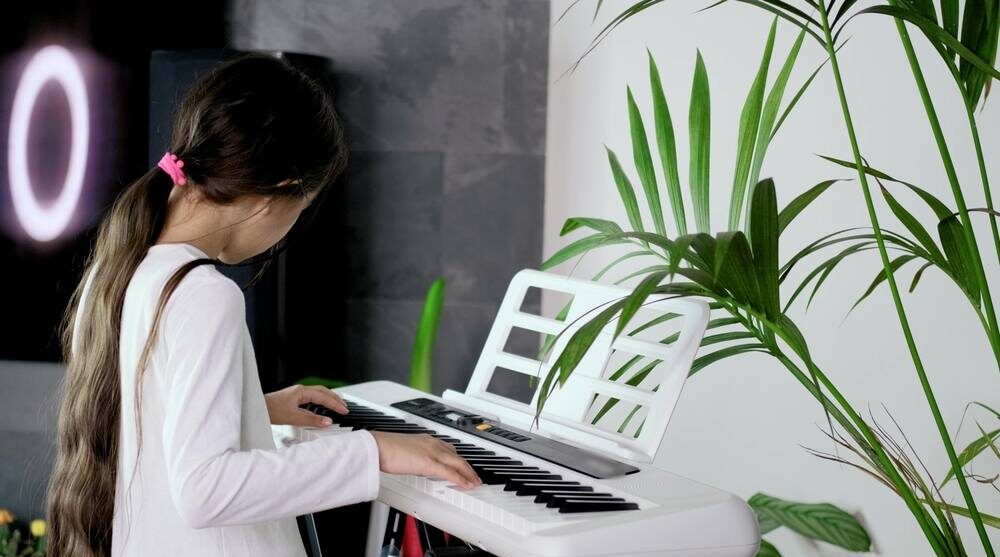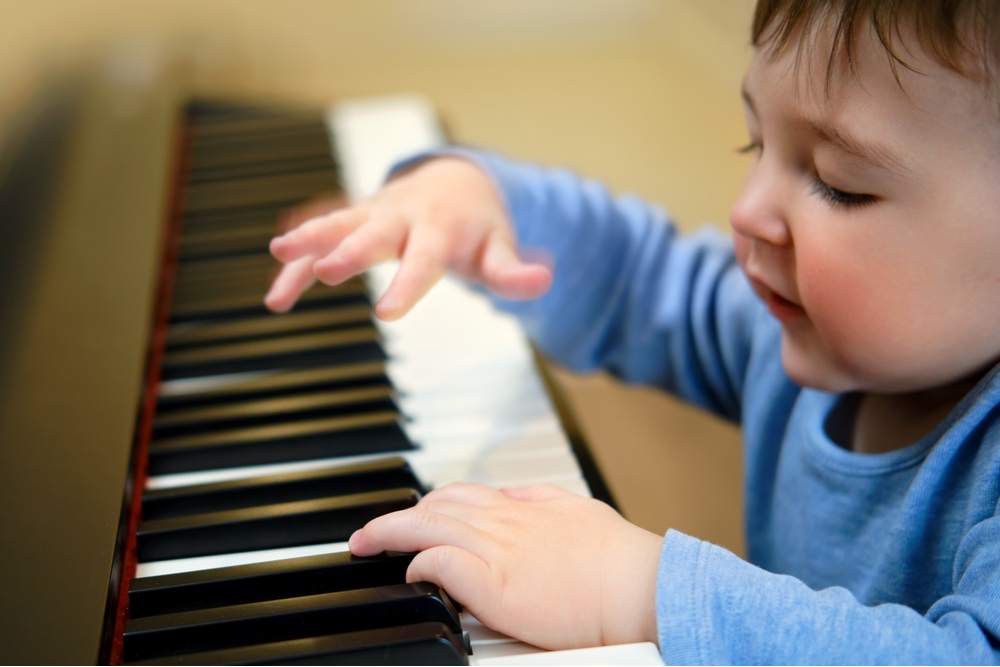
Playing the piano with small hands can be a bit challenging, but learning and becoming a proficient pianist is possible! Learning how to play piano with small hands can help give you the confidence you need to learn how to play piano and explore the world of music. While small hands can make playing the piano a bit tricky, it is certainly not impossible. In fact, many people play the piano regardless of the size of their hands. Playing the piano when you have small hands is about knowing your strengths and managing challenges along the way. Here are a few tips that may be helpful if you have small hands and want to learn how to play piano.
Tips & Tricks to Play Piano with Small Hands
Playing the piano is a lifelong musical journey, and you can always improve with practice, regardless of hand size or skill level. Here are a few tips and tricks for playing the piano with small hands.
Stretch & Flatten Your Fingers
Smaller hands may have a harder time reaching certain chords or stretches required in various pieces of music. Piano players often use a technique called finger curling to play the piano correctly. However, piano players with small hands may practice stretching and flattening their fingers instead. Your piano teacher can observe and make recommendations based on the features of your hands and help you determine the best way to come in contact with the keys.
Strengthen Fingers Through Practicing Scales
Piano players of all stripes can strengthen their fingers to improve piano playing. Strengthen your fingers by practicing scales, which can help build finger strength and dexterity. Practicing these exercises regularly and with proper technique, even modified for small hands, can help you grow as a piano player. Technical exercises help increase finger coordination and dexterity. Consistent and regular practice is key because the more you play, the stronger your hands and fingers will become.
Play the Piano Using the Sides of Your Fingers

You may also learn how to play the piano using the sides of your fingers, also known as finger weight. The finger weight technique can help you produce a more expressive and nuanced sound while also supporting small hands. With the guidance and support of your piano teacher, you can experiment with different finger positions on the keys and how to use the pads of your fingers for softer notes and the sides of your fingers for louder notes. Practicing simple exercises and scales with the sides of your fingers can also help you learn how to produce a more dynamic sound.
Omit or Change Other Notes
When playing the piano with small hands, you may find that omitting certain notes in a passage can help make it more manageable and easier to play. Omitting notes in a chord may be beneficial or necessary if you have trouble reaching all of the notes. Simplifying the melody can help when a melody is too fast or intricate for smaller hands. Your piano teacher can also work with you on how to reduce the hand span in the pieces you select by omitting certain notes in a passage while still maintaining the integrity of the piece.
Find Your Own Version of the Piano Piece
When you omit certain notes in a passage, you end up creating your own version of the piano pieces that works for you. Your piano teacher can help guide you in the process of developing your own version of a musical selection that works well for your hand size and skill level. This can also help make the piece more manageable to play and prevent strain. A good understanding of music theory will help you decide what notes to omit and how to do it.
Try to Break Up or Roll the Chord
Breaking up or rolling a chord on the piano involves playing the notes of a chord in a specific order rather than all at the same time. When playing chords on a piano, it is natural to play all the notes at once but breaking them up allows for more control over the way you play. By breaking up the chord, you can control the dynamics, rhythm, and phrasing of the music. While not always necessary, breaking up or rolling the chord can help you best express the music.
Try a Piano Your Size
Pianos come in a variety of sizes, each with its own unique characteristics and benefits. The upright piano is the most common type and is popular for smaller spaces such as apartments and homes. The size of the piano that works best for you will depend on your specific needs as well as the space you have available. Your piano teacher can also help you choose the right size piano to suit your needs.
A Friendly Reminder: Pianists Must Not Force Their Fingers
When learning to play the piano, you must not force your fingers. This can result in improper technique or even strain on your fingers and hands. When you take private lessons with a piano teacher, they can help you work on hand and finger independence in safe and effective ways. A piano teacher familiar with teaching pianists with small hands can also provide you with personalized guidance and tips specific to your needs so you don’t force your fingers.
Having Small Hands Won’t Stop You from Playing the Piano
If you have small hands and want to learn how to play the piano, you shouldn’t let that stop you! Both acoustic and digital pianos can be suitable options for players with small hands. You may consider an acoustic piano for a more authentic piano sound and feel, though the larger size keys can be an issue for some players. Digital pianos may have smaller keyboard actions and a more compact design, which can be more comfortable for players with small hands. It’s always a good idea to test out a piano and make sure it feels comfortable to play before making a decision. You can also consult with your piano teacher for guidance on what type of piano would work best for you.
Learn the Piano with Our World-Class Piano Instructors!
Call or visit us online today to schedule piano lessons with Lessons In Your Home.
